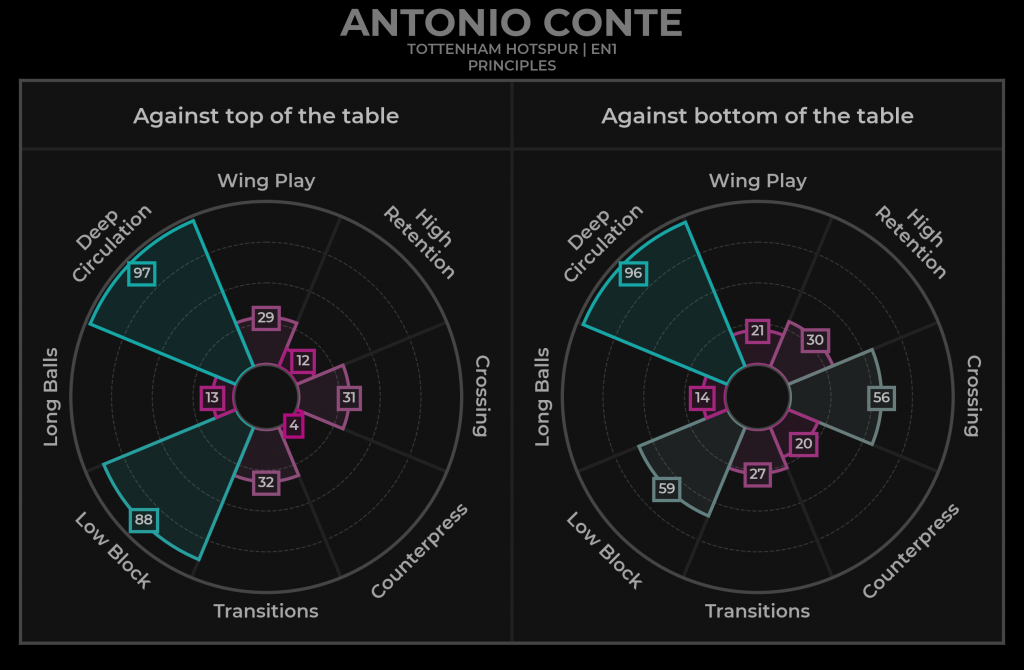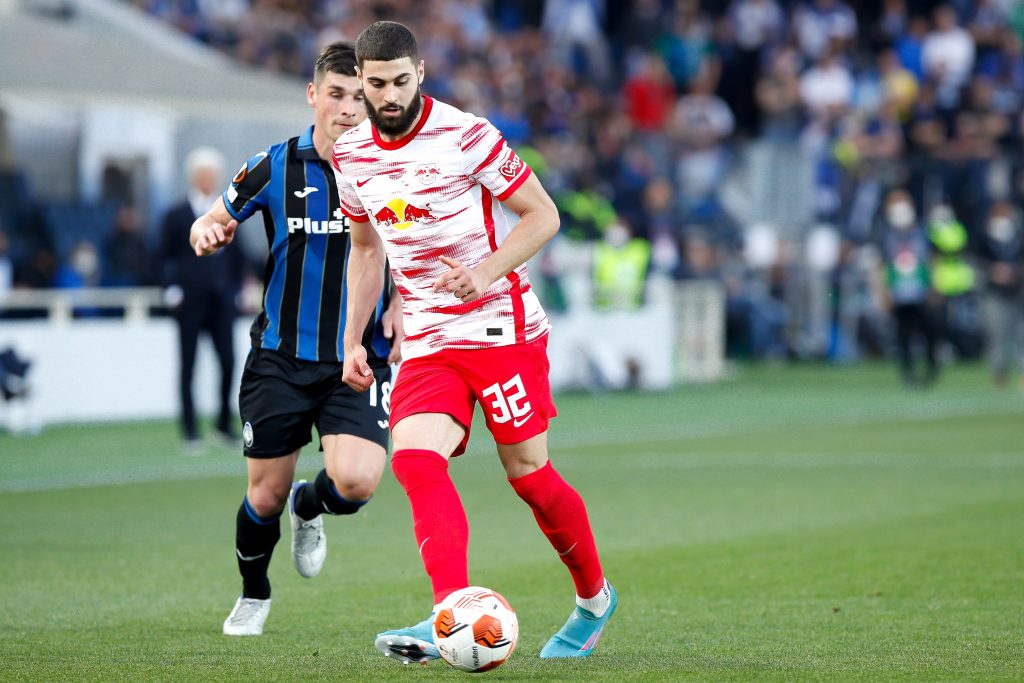In this piece, Varun Vasudevan uses an array of data to suggest which club would make the most sensible destination for the Croatian centre back
Modern football scouting has come leaps and bounds from the days when the act of scouting was limited to travelling to see players in the flesh repeatedly (often limited by logistics and geography) and compiling hard copy dossiers for managers to read through. Today, most teams have data analysts who dive into the metrics metrics to profile a player. The advancement of technology has meant that a lot of this is possible without any sort of travel.
The chances of a high potential ‘wonderkid’ being missed by big clubs is really low now, especially if they are playing in the top leagues of Europe. But one can never be 100% sure when it comes to predicting the growth into and suitability for a new team of young players.
One of the ways to ensure a smoother transition is to look at stylistic similarities between the selling club and possible destinations. It is likely that any player will adapt more quickly to a team with a like tactical outlook. To test this idea, let’s look at the 20-year-old Croatian centre-back Josko Gvardiol, a highly rated prospect who could move to most Champions League sides.
Assessing Gvardiol
Gvardiol is a predominantly left-footed centre back (68% usage) at RB Leipzig, but he has attracted a lot of attention from big clubs across Europe. His contract, according to Transfermarkt, ends in June 2026 and his current market value is around £27m, while he could move for anywhere between £30-40m.
Here is his radar.
Moving to RB Leipzig just last summer, Gvardiol has already adjusted to life in the Bundesliga with style. He has 46 appearances from a possible 52 for Leipzig this season, showcasing his key starter status.
Gvardiol plays as the left-sided centre-back in a back three. Willi Orban and Mohamed Simakan usually take up the central and right-sided spots respectively. All three defenders have been consistent and held on to their roles. Gvardiol has played 38 times as a centre-back and 7 times as a left-back in 21/22, the latter happening on the few occasions RBL shifted to a back four formation. On three occasions this season, Gvardiol also played as a centre-back in a four (a consistent stretch during the end of November) with mixed results. After that experiment, he was never again deployed as a centre-back in a back four.
At Dinamo Zagreb, where Gvardiol rose to fame as a teenager, he almost always lined up as the left-sided centre-back in a back three system, tasked with progressing the ball. The Croatian national team plays a back four and on all the four times Gvardiol has started for the national team, he has done so at left-back. Gvardiol progresses the ball superbly who likes to take up advanced positions, but he’s not an aerially dominant defender; this probably explains the preference to use him a back three where there is cover for his forays up field and the heading burden can be shared. It seems like a fair assumption that Gvardiol is best suited as a LCB in a back three while also offering the ability to play left-back in a four as a back-up option.
His movement maps confirm his role: Gvardiol operates on the left of a back three and is very willing to go high and wide when his team has the ball. In order to receive passes, he drops to central areas, especially when play is on the opposite side. Most of his defensive work comes in the central and left areas of defence, while he doesn’t mind pressing higher up the left wing for interceptions and recoveries.
In his role, Gvardiol is tasked with progression and constantly bringing the ball out of defence in a bid to connect with his wingback or midfield pivot. As we can see from his pizza chart, his passing and carrying are excellent, especially when it comes to progression. Let’s dive into his progression a bit more and split his progressive passes into ones from the defensive third, middle third and attacking third.
While Gvardiol has the ability to progress from deep and can also provide some dangerous passes from the final third on the occasions he’s high up the pitch (or plays as a left-back), his major passing progression by volume comes from the middle third. Whether it’s a vertical ball down the wing, finding a central player in the opponent’s half or switching the ball to the opposite side, Gvardiol is very good when it comes to advancing to the final third from the middle of the pitch.
Leipzig follow a gegenpress strategy as a club philosophy, preferring to be more vertical and direct when on the ball, and aiming to press and regain possession quickly when without the ball. This is the reason why Gvardiol has good defensive numbers as well, as he engages in pressures and tackles regularly. Due to his wide role, his numbers for dribblers tackled (usually higher for central players who face transitions) and aerials contested (largely taken up by the central cover player) are lower but his high ‘Pressure success %’ and low ‘Dribbled past’ highlight how reliable he is as a defender.
Finding a UCL club
While there are exceptions to this, most youngsters want to play in the Champions League. It’s the dream of every developing footballer, especially if they are already at that level. If Gvardiol does move from RB Leipzig, who already ply their trade in Europe’s premier competition, it would be for another UCL club. Keeping that as a condition, I list down all the clubs in the top five leagues set to play in the UCL in 2022/23. These clubs are: Real Madrid, Eintracht Frankfurt, Manchester City, AC Milan, Bayern Munich, Paris Saint-Germain, Liverpool, Chelsea, Barcelona, Juventus, Atletico Madrid, Sevilla, Tottenham, Borussia Dortmund, Inter Milan, Napoli, Bayer Leverkusen, and Marseille.
In Gvardiol’s case, the first filter narrows it down heavily. He seems to prefer playing as a left-sided wide centre-back in a back three, which means that we need to filter in teams that can potentially play that formation.
That narrows it down to: Eintracht Frankfurt, Chelsea, Atletico Madrid, Tottenham, and Inter Milan.
Playing styles
Let’s compare these five teams with RB Leipzig to understand a bit more on the playing styles of each one.
When it comes to applying pressures, Frankfurt engage the most, while Inter Milan are the least. RBL are somewhere in the middle. Their split features a large focus on middle third pressing, which goes in tandem with the logic of the counter-pressing philosophy to constrict the midfield area. Atletico Madrid and Totteham seem a little similar in that sense.
When it comes to PPDA (Passes Allowed Per Defensive Action), only Tottenham allow more passes for the opponent to build up in comparison to RBL. This shows that while RBL do press heavily in midfield, they don’t really go out of their way to disrupt the opponent build up the way Chelsea or Inter Milan do. RBL are closer to Atletico Madrid and Tottenham in not really having an ambitious high press.
On the ball, we compare each team’s ‘Possession %’ to their ‘Short pass attempt %’ (Short passes attempted divided by total passes attempted). Only Chelsea beat RBL on both metrics, highlighting how the Bundesliga side are deceptively short-pass-oriented. They aren’t as direct and gung-ho as the likes of Frankfurt and Atletico. Inter and Tottenham read similarly.
Finally, plotting ‘Pressures Applied’ versus ‘Pressure Success %’, we see that RBL are the most successful in this set when it comes to winning the ball back from pressing. This is largely due to the pitch constriction and counter-pressing ideology to reduce distances and win the ball quickly when they lose it. They necessarily don’t apply as many pressures as a club like Frankfurt, but are very successful with it. Inter and Chelsea apply much lesser. Atletico and Tottenham are once again similar to RBL.
As a summary, we can safely say that Frankfurt operate very differently, while Chelsea and Inter Milan also take a less intense and high-line possession approach that is a little different from what RBL try to do. Tottenham and Atletico read closest as teams that do press well in midfield, attempt enough of a short passing possession approach to qualify as a big club, but don’t really commit a very high line and high press to win back the ball and disrupt the opposition build up.
Atletico Madrid and Tottenham seem to be easier switches for Gvardiol among the options, in terms of playing style.
Let’s look at the team suitability from another angle. Using TransferLab’s excellent Coach ID feature, we take a look at a style map which plots the profiles of each team in terms of their playing style for the tenures of the last manager at each respective club.
Much like the interpretation from before, Tuchel’s Chelsea and Inzaghi’s Inter profile very similarly in being control-oriented. On the other hand, Simeone’s Atletico Madrid and Conte’s Tottenham, while having a lean towards build up, are more balanced, willing to adopt press-baiting or park-the-bus tactics as well, when needed. Conte’s Spurs seem the closest to Tedesco’s Leipzig in terms of playing style and are probably our best bet for a smooth transition of Gvardiol’s skillset.
Again, we can use Analytics FC’s Coach ID tool to show these similarities against different opposition abilities.


Crucially, the deep circulation numbers are very similar, which will suit a passing centre-back like Gvardiol. Spurs sit deeper as rule, and also use less wing play and crossing, but this is partly because Conte has not been working with wing-backs of the quality he would like and has also begun to adapt Sessegnon’s role at the club. A combination of more aggressive wing-backs and a passer who can unlock the wings with switch passing would likely see those numbers increase, but otherwise, as the style map shows, Tedesco and Conte are not dissimilar in their overall approach.
Feasibility
Lastly, let’s look at whether Tottenham even have the space and means for Gvardiol. Ben Davies has played the LCB role in the back three under Conte for most of the 2021/22 season since the arrival of the Italian manager. Conte clearly desires an upgrade for the slot, which is indicated by Spurs’ loan deal for left-footed progressive centre-back, Clement Lenglet. Lenglet has had his share of troubles at Barcelona and will be hoping to resurrect his career with the loan move, but there is no option to make the deal permanent, suggesting a question mark over the London club’s seriousness to make him a part of their plans on a permanent basis.
Given the nature of the loan deal for Lenglet, his ability to slot in at the centre of a back three, and Ben Davies not being the ideal Conte LCB, it stands to reason that Spurs still have the scope to sign a permanent left-sided CB. They also have the means, given their ambitious foray into the transfer market this summer. They could offset the purchase of a new centre-back with the sale of one, like Joe Rodon, who seems to be low in the pecking order for centre-backs. The £30m-£40m asking price wouldn’t prove to be a barrier for the (recently) ambitious London club.
This article has shown how we can use data to find sensible fits for players. This approach can help clubs avoid costly mistakes and ensure that players hit the ground running at new clubs.
Image credit: Shutterstock/Fabrizio Andrea Bertani














